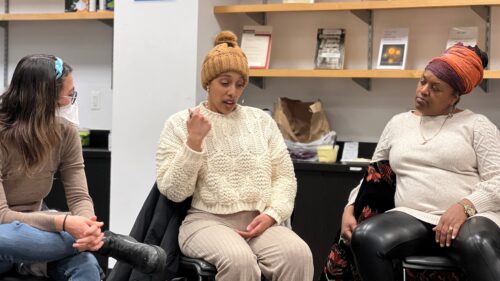Restorative justice responds to harm by working to repair relationships and harnessing the healing power of community.
Restorative justice brings people who have caused harm together with those who have been impacted and the wider community to engage in a process of accountability and healing. With roots in centuries-old indigenous practices, restorative justice creates the space for everyone involved to share how the harm has affected them and explore ways to move forward together. It also addresses the complex factors that often lead to harm, from struggles with mental health and trauma to underinvestment in marginalized communities.
We incorporate restorative justice into our work in courts, schools, and communities. We use restorative approaches in court as an alternative to typical, punitive responses for both low-level and serious offenses. In schools, we help students resolve conflicts through relationship building and peacemaking circles while reducing reliance on responses like suspension, which disproportionately impact students of color. And we use restorative practices in our community-based programs to foster healing and repair before people come into contact with the justice system.
Beyond the individuals directly impacted by an incident, restorative justice asks each of us to reflect on our collective responsibility to undo the conditions that lead to harm and create safer, more just communities. By broadening who is responsible for—and capable of—making change, restorative justice harnesses the power of the wider community.
High Accountability & High Support = Restorative Justice
Restorative Justice Aims To Not Center Shame.
Responsibility is Naming What Happened.
Mayor’s Office And CUNY Invest $6.5M In Restorative Justice For 16 NYC Organizations
Jul 30, 2024
Car Crash Victims Seek Justice in a New Way: Talking to the Drivers
Nov 28, 2023
